| id | status |
|---|---|
| 1 | Employed |
| 2 | Unemployed |
| 3 | Employed |
| 4 | Employed |
| 5 | Unemployed |
ECON 0150 | Economic Data Analysis
The economist’s data analysis skillset.
Part 1.6 | Relationships In Space
Geographic Data
Some types of relationships in space
- Geographic data is data organized on three axes (latitude, longitude, altitude)
- We typically only use latitude and longitude
- Geo data is often combined with other variables like population
- Two main types of geo data: points, shapes
- We sometimes observe points, but most data comes in groups
Example: Restaurants by Zipcode
Are there fewer restaurants further from downtown Pittsburgh?
We’re going to use a Census maps and openly available data on restaurant locations to answer this question.
- Data:
Census ShapefilesandOpen Street Maps
Geographic Data
Maps are (typically) plots on two axis
> a basic map of Pittsburgh

Geographic Data
Maps can show any level of detail available in the data
> a map of Pittsburgh Zipcodes

Geographic Data
We can add information: colors
> a map of Pittsburgh Zipcode populations

Geographic Data
We can add information: colors
> a map of Pittsburgh Zipcode populations: interactive!
Geographic Data
Maps can also show points
> some restaurants in Pittsburgh!

Geographic Data
Maps can also show points
Geographic Data
Maps can also show points
- Points are nice but we typically can’t use them raw
- Some point transformations: distances between points; group by area; etc
- We can also relate points to other variables (eg. zipcode population for each restaurant)
Geographic Data Example: Nunn (2008)
Did the historical trade of enslaved people impact modern economic development in Africa?
Method: Uses historical data and the distance from major ports
Findings: Areas more disrupted by enslavement have lower GDP today, due to:
- Weakened institutions (political fragmentation, mistrust).
- Disrupted societies (population loss, economic stagnation).
Implication: Historical shocks can have persistent economic effects.
Geographic Data Example: Weidman (2024)
Does the party of your neighbors impact your decision to vote?
Geographic Data Example: Weidman (2024)
My dissertation involved measuring distances between voters
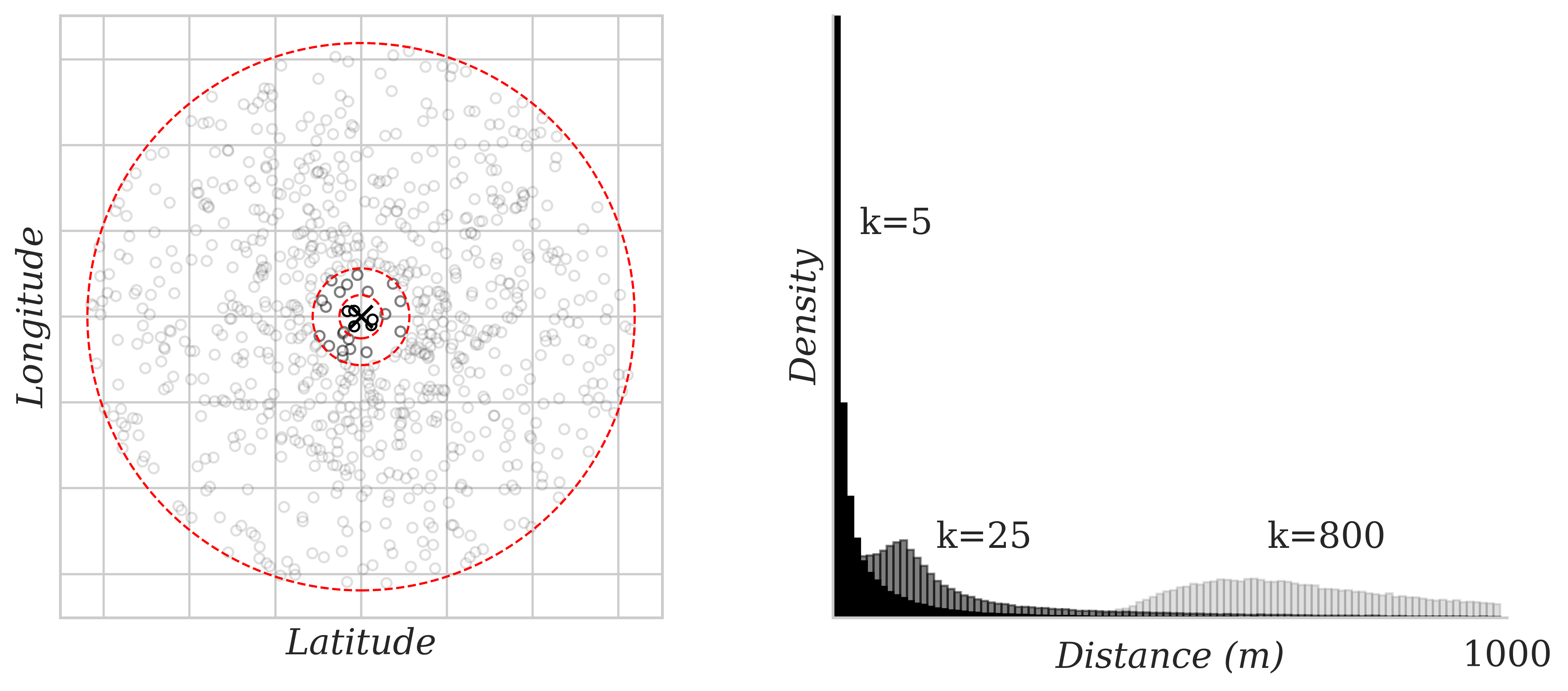
Geographic Data
Are there fewer restaurants further from downtown Pittsburgh?
> lets get back to our question!
Geographic Data
Are there fewer restaurants further from downtown Pittsburgh?

Geographic Data
Are there fewer restaurants further from downtown Pittsburgh?
Steps:
- Measure points by zipcode area
- Measure distances between groups (take the centroid, etc)
Geographic Data
Subquestion 1: how many restaurants are in each Pittsburgh zipcode?

Geographic Data
Subquestion 2: how far is each zipcode from downtown?

> measure from the center (centroid) of the zipcode
Geographic Data
Subquestion 2: how far is each zipcode from downtown?

> measure from the center (centroid) of the zipcode
Geographic Data
Subquestion 2: how far is each zipcode from downtown?
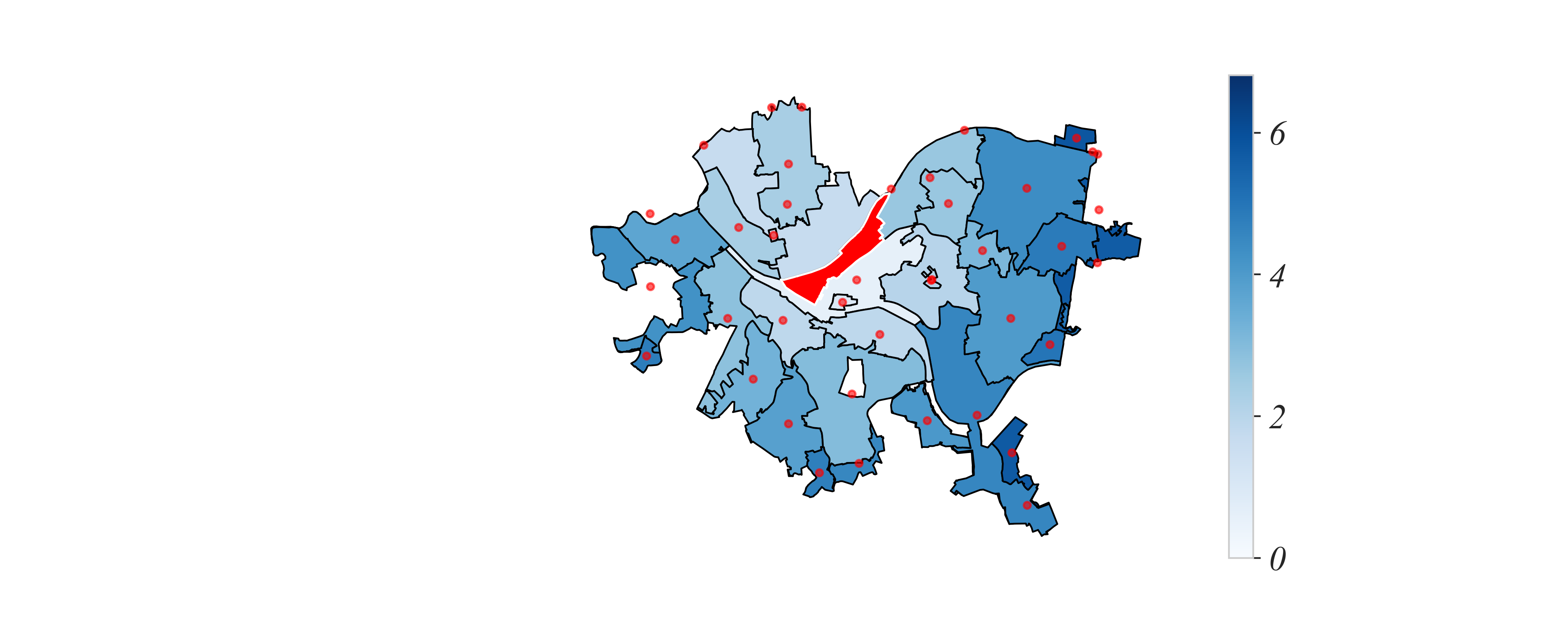
> what’s the distribution?
Geographic Data
Subquestion 2: how far is each zipcode from downtown?

> we now have enough to answer our main question!
Geographic Data
Are there fewer restaurants in areas further from downtown Pittsburgh?

Homework 1.6 | US City Population and Temp
We’re going to use data on locations (lat, lng), population, and temperature (avg_temp) of US cities to map temerature and examine whether there is a relationship between latitute (north/south) is related to temperature.
- Data:
US_Cities.csvandEastern_Cities.csv
Part 1 Wrap Up
Exercise 1: Employment Status
What 1) are the dimensions of this dataset, and 2) an effecitve visualization?
A dataset on the employment status of individuals.
Data Dimensions:
- Data Structure: Cross-Sectional
- Number of Variables: Univariate
- Variable Type(s): Binary Categorical
Exercise 1: Employment Status
What 1) are the dimensions of this dataset, and 2) an effecitve visualization?
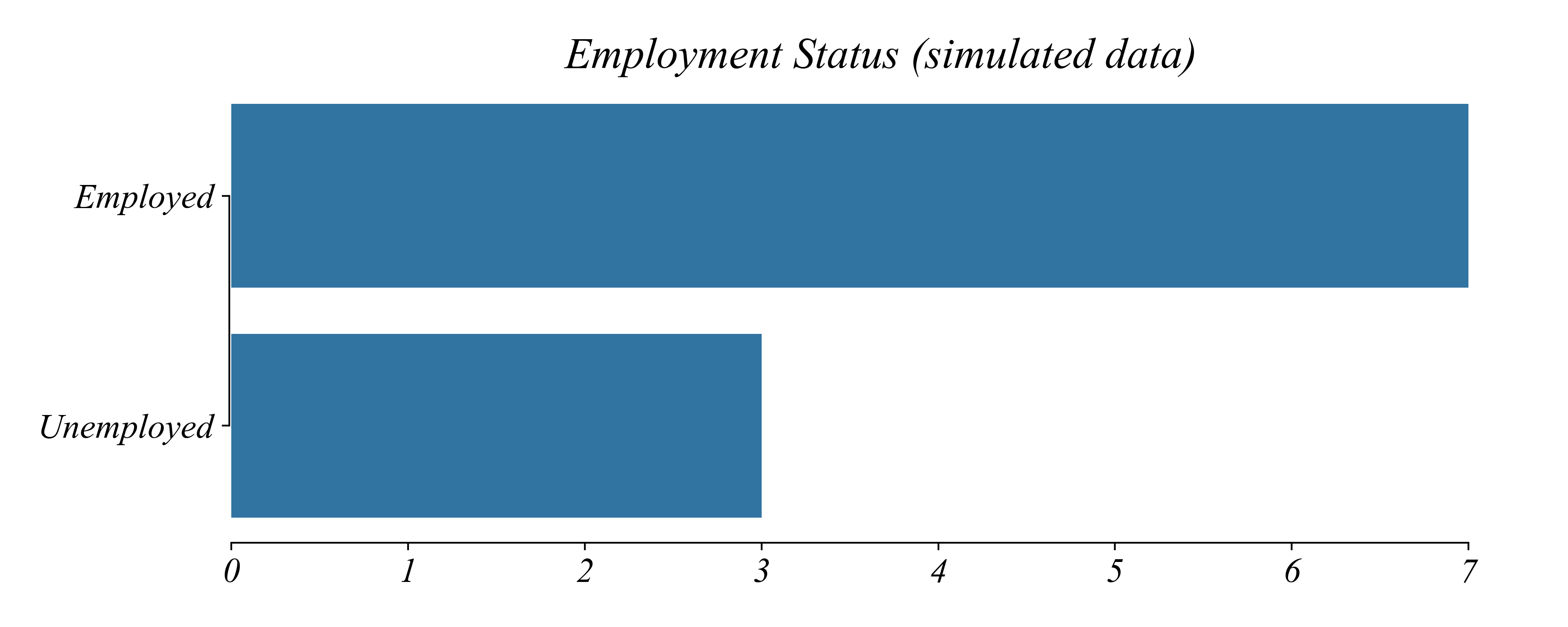
A Barplot effectively visualizes
- Cross-Sectional
- Binary Categorical
- Univeriate
Exercise 2: Employment Industry
What 1) are the dimensions of this dataset, and 2) an effecitve visualization?
A dataset on the employment sector of individuals.
| sector |
|---|
| Tech |
| Healthcare |
| Finance |
| Tech |
| Manufacturing |
Data Dimensions:
- Data Structure: Cross-Sectional
- Number of Variables: Univariate
- Variable Type(s): Nominal Categorical
Exercise 2: Employment Industry
What 1) are the dimensions of this dataset, and 2) an effecitve visualization?
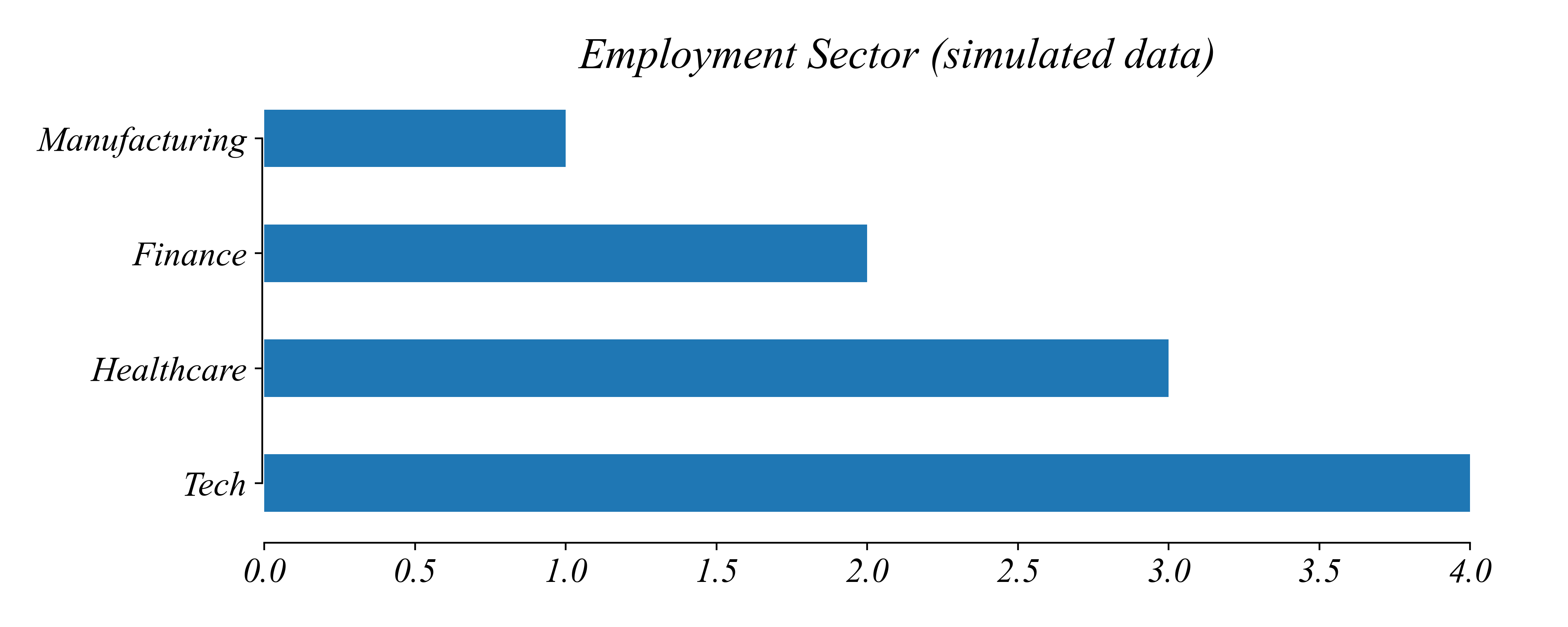
A Barplot effectively visualizes
- Cross-Sectional
- Nominal Categorical
- Univeriate
Exercise 3: Educational Attainment
What 1) are the dimensions of this dataset, and 2) an effecitve visualization?
A dataset on the educational attainment of individuals.
| level |
|---|
| High School |
| Bachelor's |
| Master's |
| High School |
| Bachelor's |
Data Dimensions:
- Data Structure: Cross-Sectional
- Number of Variables: Univariate
- Variable Type(s): Ordinal Categorical
Exercise 3: Educational Attainment
What 1) are the dimensions of this dataset, and 2) an effecitve visualization?

A Barplot (or histogram) effectively visualizes
- Cross-Sectional
- Ordinal Categorical
- Univeriate
Exercise 4: Annual Income
What 1) are the dimensions of this dataset, and 2) an effecitve visualization?
A dataset on annual individual income.
| income |
|---|
| 45000 |
| 52000 |
| 38000 |
| 65000 |
| 41000 |
Data Dimensions:
- Data Structure: Cross-Sectional
- Number of Variables: Univariate
- Variable Type(s): Numerical
Exercise 4: Annual Income
What 1) are the dimensions of this dataset, and 2) an effecitve visualization?

A Histogram (or boxplot) effectively visualizes
- Cross-Sectional
- Numerical
- Univeriate
Exercise 5: Employment by Education
What 1) are the dimensions of this dataset, and 2) an effecitve visualization?
A dataset on employment by education level.
| education | employed |
|---|---|
| High School | Yes |
| Bachelor's | Yes |
| Master's | No |
| High School | No |
| Bachelor's | Yes |
Data Dimensions:
- Data Structure: Cross-Sectional
- Number of Variables: Bivariate
- Variable Type(s): Categorical by Categorical
Exercise 5: Employment by Education
What 1) are the dimensions of this dataset, and 2) an effecitve visualization?
We didn’t cover how to visualize categorical by categorical bivariate data.
Exercise 6: Income by Education
What 1) are the dimensions of this dataset, and 2) an effecitve visualization?
A dataset on annual individual income by education.
| education | income |
|---|---|
| High School | 35000 |
| Bachelor's | 52000 |
| Master's | 68000 |
| High School | 38000 |
| Bachelor's | 55000 |
Data Dimensions:
- Data Structure: Cross-Sectional
- Number of Variables: Bivariate
- Variable Type(s): Numerical by Categorical
Exercise 6: Income by Education
What 1) are the dimensions of this dataset, and 2) an effecitve visualization?
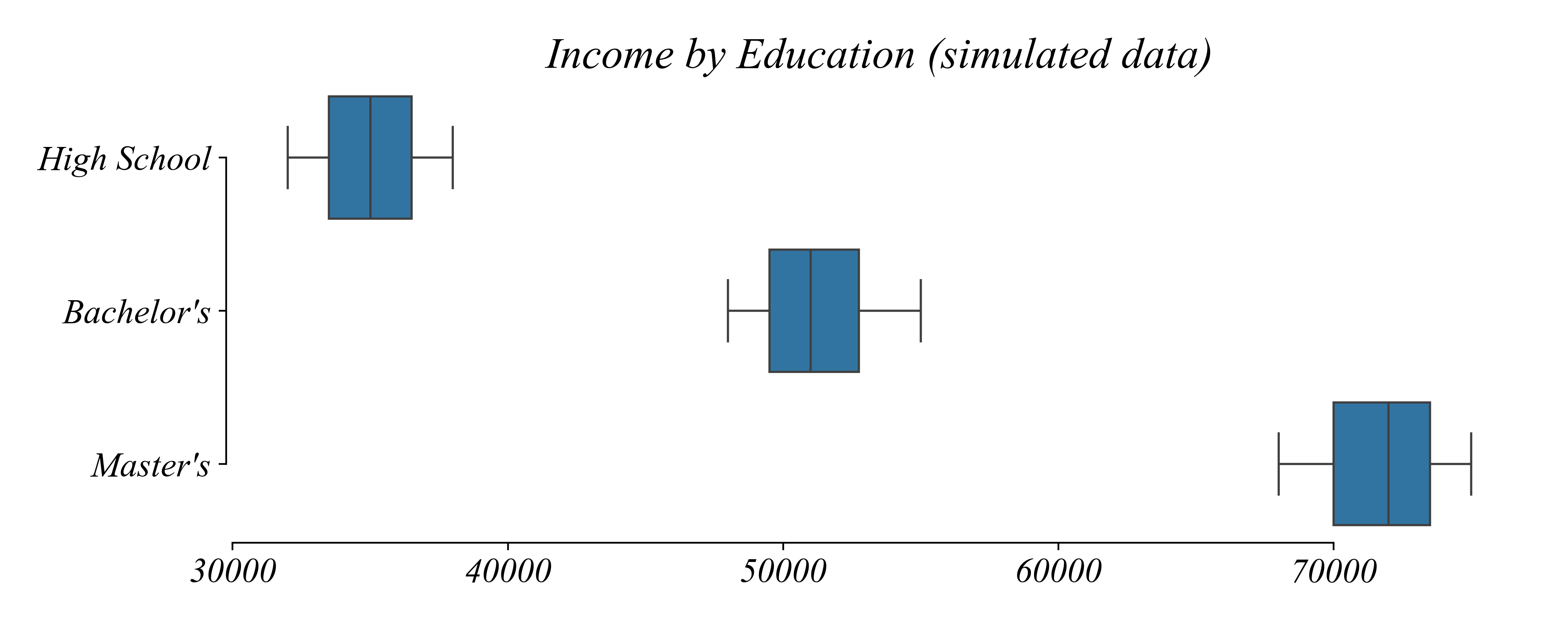
A Multi-Boxplot (or multi-linegraph-histogram) effectively visualizes
- Cross-Sectional
- Numerical by Categorical
- Biveriate
Exercise 7: Income by Age
What 1) are the dimensions of this dataset, and 2) an effecitve visualization?
A dataset on annual individual income by age.
| age | income |
|---|---|
| 25 | 35000 |
| 32 | 52000 |
| 28 | 42000 |
| 45 | 68000 |
| 38 | 58000 |
Data Dimensions:
- Data Structure: Cross-Sectional
- Number of Variables: Bivariate
- Variable Type(s): Numerical by Numerical
Exercise 7: Income by Age
What 1) are the dimensions of this dataset, and 2) an effecitve visualization?
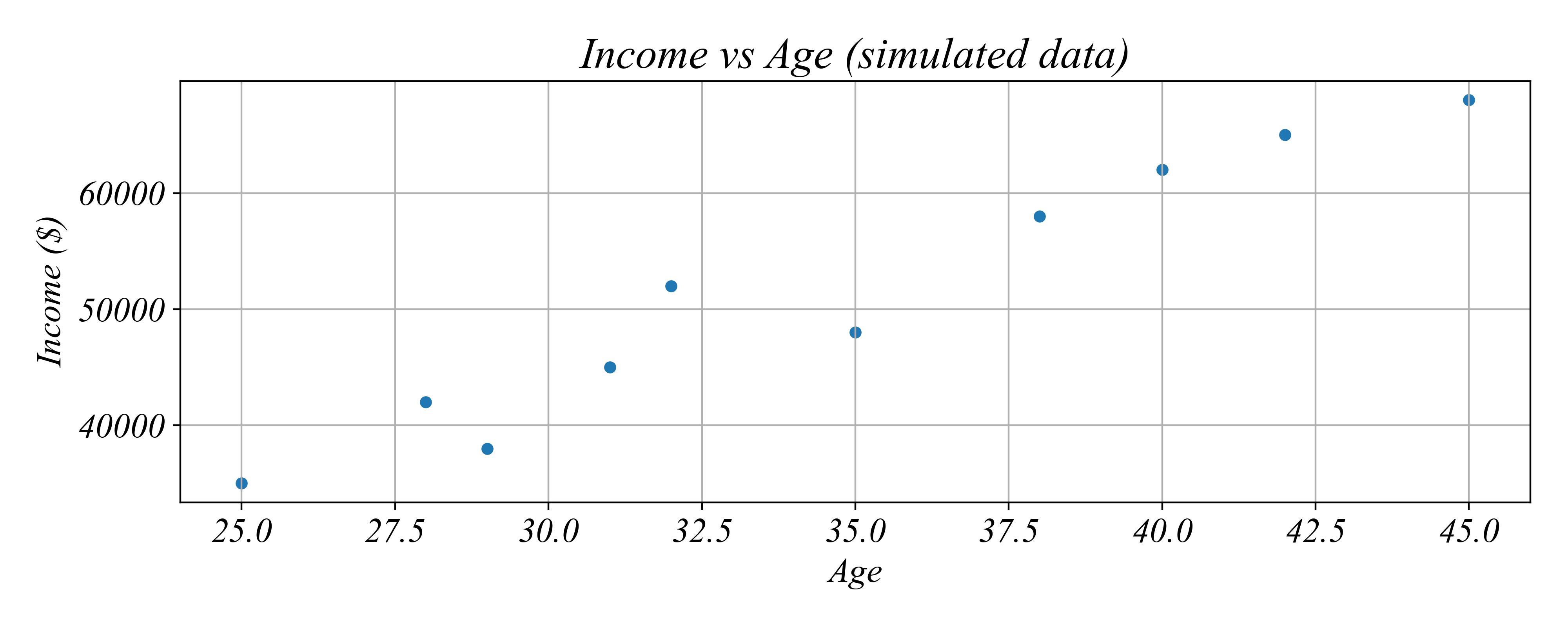
A Scatterplot effectively visualizes
- Cross-Sectional
- Numerical
- Biveriate
Exercise 8: GDP After 2015
What 1) are the dimensions of this dataset, and 2) an effecitve visualization?
A dataset on US GDP between 2015 and 2015.
| year | gdp |
|---|---|
| 2015 | 18.000000 |
| 2016 | 18.600000 |
| 2017 | 19.500000 |
| 2018 | 20.500000 |
| 2019 | 21.400000 |
Data Dimensions:
- Data Structure: Timeseries
- Number of Variables: Univariate
- Variable Type(s): Numerical
Exercise 8: GDP After 2015
What 1) are the dimensions of this dataset, and 2) an effecitve visualization?
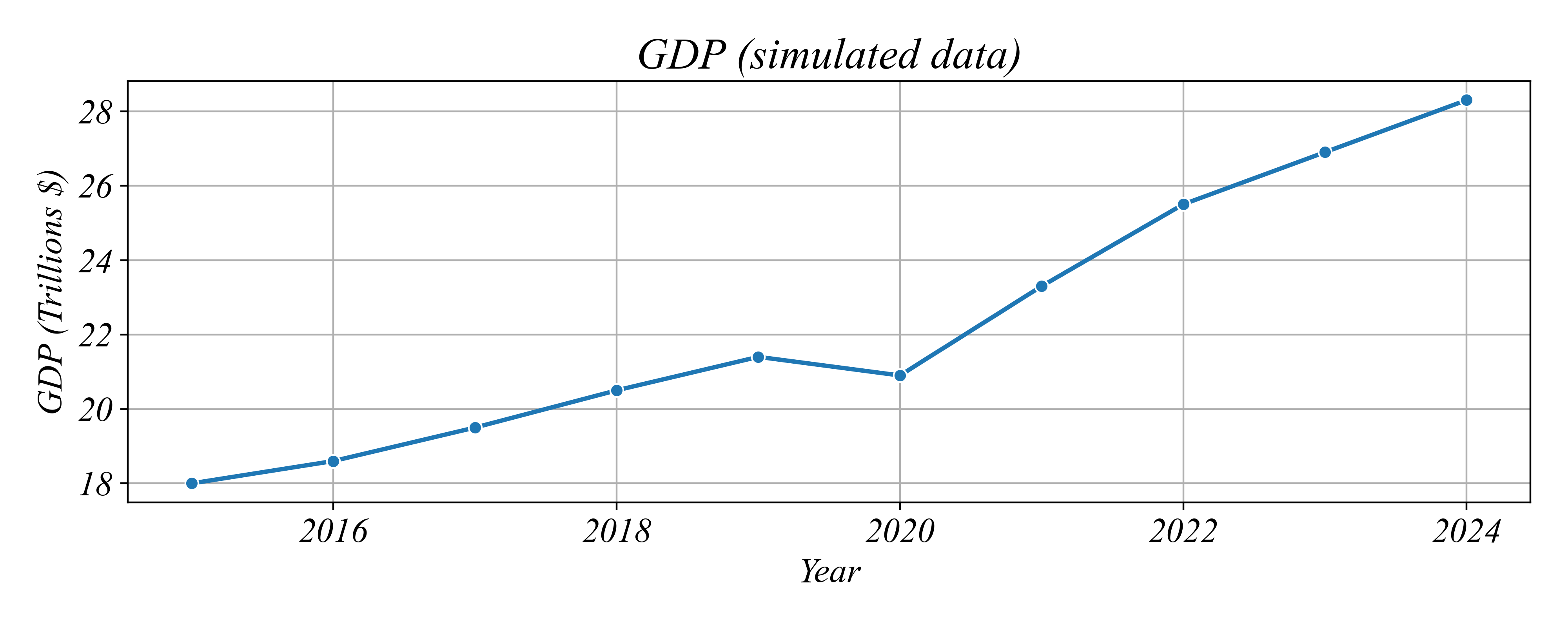
A Linegraph effectively visualizes
- Timeseries
- Numerical
- Univariate
Exercise 9: Inflation and Unemployment
What 1) are the dimensions of this dataset, and 2) an effecitve visualization?
A dataset on inflation and unemployment after 2015.
| year | unemployment | inflation |
|---|---|---|
| 2015 | 5.300000 | 0.100000 |
| 2016 | 4.900000 | 1.300000 |
| 2017 | 4.400000 | 2.100000 |
| 2018 | 3.900000 | 2.400000 |
| 2019 | 3.700000 | 1.800000 |
Data Dimensions:
- Data Structure: Timeseries
- Number of Variables: Bivariate
- Variable Type(s): Numerical
Exercise 9: Inflation and Unemployment
What 1) are the dimensions of this dataset, and 2) an effecitve visualization?

A Scatterplot (or sometimes a multilinegraph) effectively visualizes
- Timeseries
- Numerical
- Bivariate
Exercise 9: Inflation and Unemployment
What 1) are the dimensions of this dataset, and 2) an effecitve visualization?
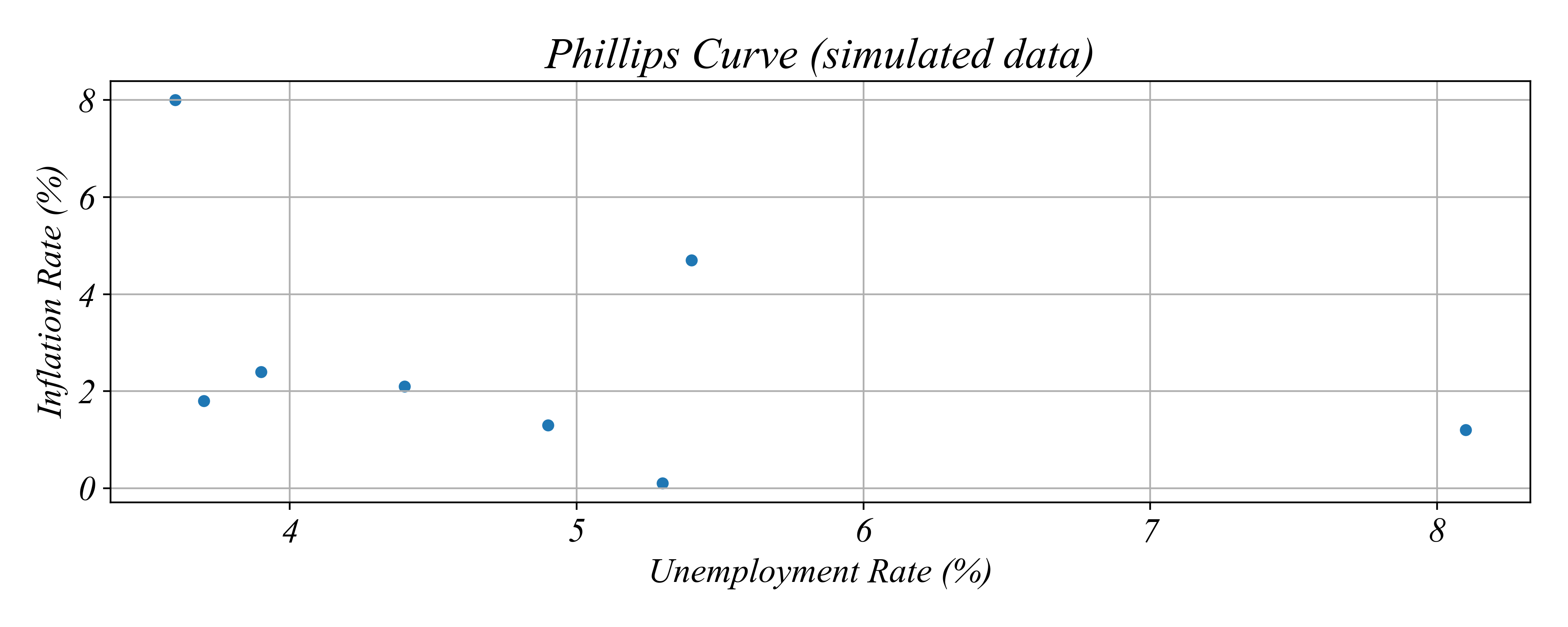
A Scatterplot (or sometimes a multilinegraph) effectively visualizes
- Timeseries
- Numerical
- Bivariate
Exercise 10: GDP Growth by Country
What 1) are the dimensions of this dataset, and 2) an effecitve visualization?
A dataset on GDP growth by country after 2020.
| country | year | gdp_growth |
|---|---|---|
| USA | 2020 | 2.200000 |
| USA | 2021 | 5.700000 |
| USA | 2022 | 2.100000 |
| USA | 2023 | 2.900000 |
| Germany | 2020 | -4.600000 |
Exercise 10: GDP Growth by Country
What 1) are the dimensions of this dataset, and 2) an effecitve visualization?
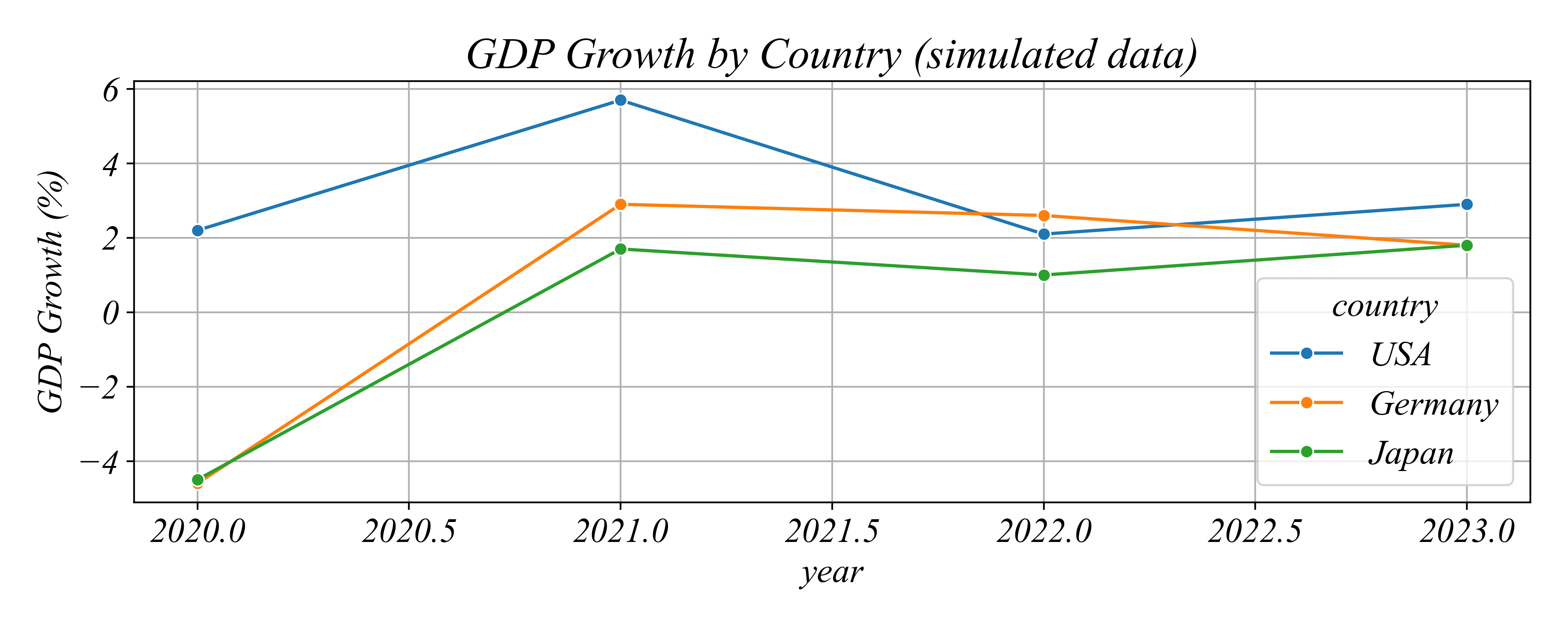
A Multi-Linegraph (or sometimes a scatterplot) effectively visualizes
- Panel
- Numerical
- Univariate